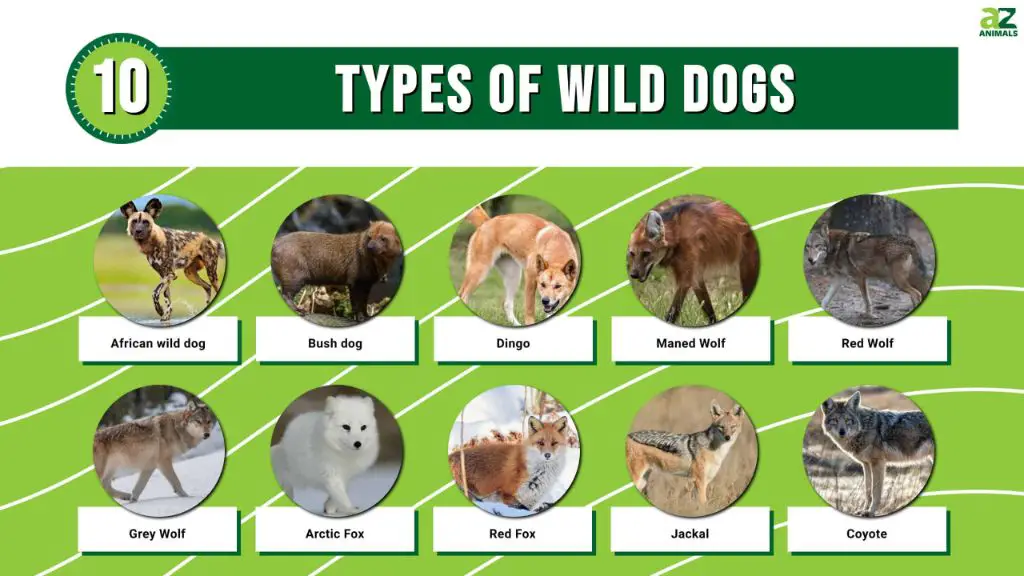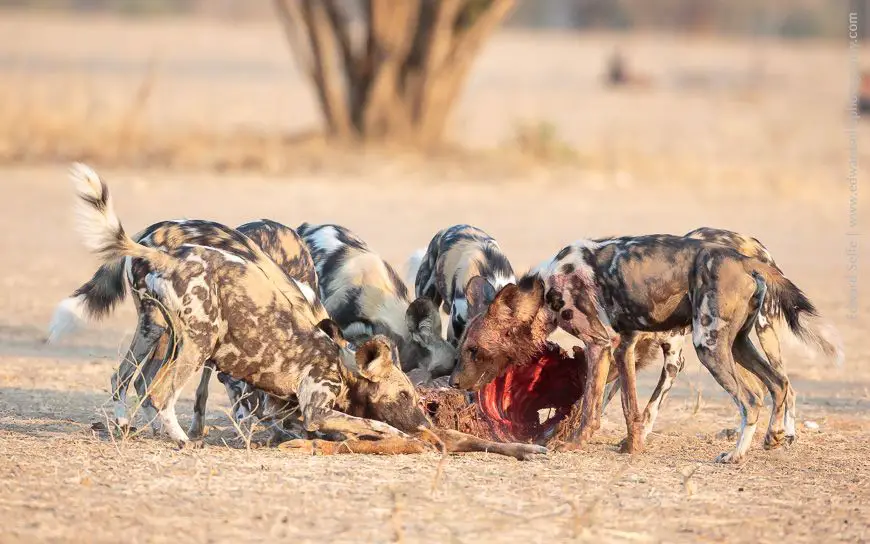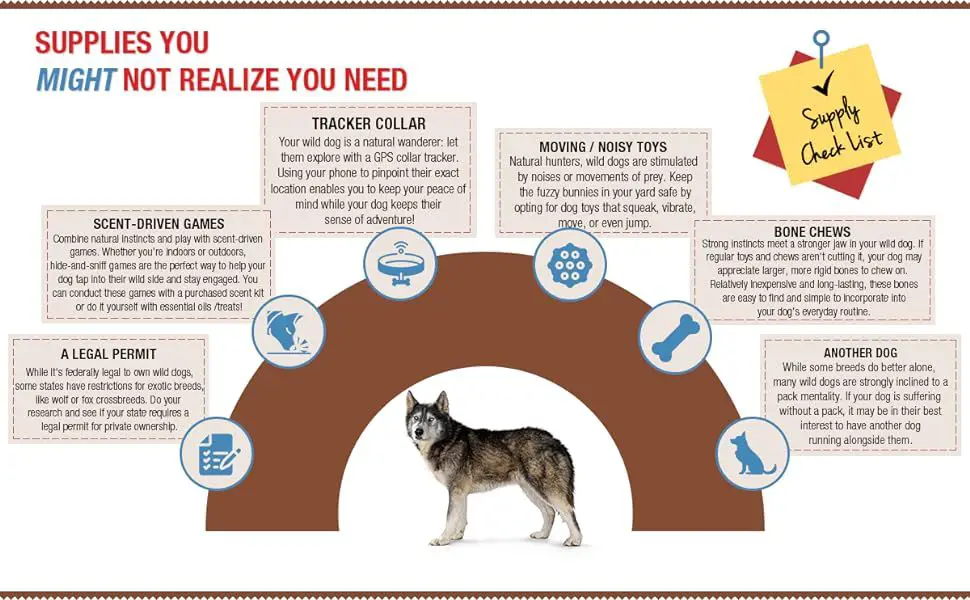Introducing Wild Dogs in America
Wild dogs are those that live independently of humans in a natural environment and survive by hunting and scavenging. Unlike domesticated dogs that rely on human care, wild dogs regulate their own populations based on food supply and territorial constraints. Wild dogs display natural behaviors like hunting in packs and establishing dominance hierarchies.
While Native Americans had domesticated dogs, wild dogs did not originate in the Americas until after European colonization. As European settlers brought over herding and hunting dog breeds in the 17th-19th centuries, some escaped or were abandoned and reverted to a wild state. These feral dog populations gave rise to wild dog species adapted to the American landscape like the Carolina Dog.
Wild dog species are now recognized as native to America and play an ecological role as apex predators that control populations of prey like deer. Their presence indicates a balanced ecosystem. At the same time, wild dogs occasionally come into conflict with humans and steps must be taken to manage their populations.
Species of Wild Dogs Found in America
There are several species of wild dogs native to North America, including:

Coyotes
Coyotes (Source 1) are found throughout North America from Alaska to Central America. They are highly adaptable and can thrive in urban and rural environments. Coyotes have grayish-brown fur and bushy tails. They hunt small mammals like rabbits and rodents but will also eat fruit and insects. Coyotes form small family groups with an alpha breeding pair.
Wolves
Wolves (Source 3) inhabit remote wilderness areas of Canada and Alaska as well as the Great Lakes region. The gray wolf is the largest wild dog in North America weighing up to 175 pounds. Wolves have dense fur that can be gray, brown, black, or white. They usually live in packs of 5-12 members that cooperatively hunt large prey like deer, elk, and moose.
Foxes
There are several fox species in North America including the red fox, gray fox, kit fox, swift fox, and Arctic fox (Source 2). Foxes are solitary, omnivorous hunters feeding on rodents, birds, insects, and fruit. They have bushy tails, pointed ears, and elongated snouts. Red foxes are the most widespread species while Arctic foxes inhabit the tundra regions of northern Canada and Alaska.
Geographic Range of Wild Dogs
Wild dogs are found in various parts of the United States. The most notable species is the American Dingo or Carolina Dog (Carolina Dog). The American Dingo is native to parts of the Southeastern United States and is found primarily in remote areas of South Carolina, Georgia, Florida, Alabama and Mississippi, where they have adapted to forest life (American Dingo).

American Dingoes remain mostly solitary or form loose pack structures. Their migration patterns are poorly understood, but they may migrate seasonally within their ranges following prey animals like whitetail deer or rabbits. Dingoes avoid open areas and human interaction.
Other wild and feral dogs like free-roaming domestic dogs, coyotes, wolves, and wolf-dog hybrids can be found across much of the United States, particularly in the West and Midwest in habitats ranging from forests to deserts. Their ranges and migrations depend on food availability and their interactions with humans.
Diet and Hunting Behavior
Wild dogs are opportunistic carnivores and eat a variety of prey including small mammals like rabbits, rodents, birds and reptiles. They also scavenge on carrion and human refuse when available. Wild dogs are pack hunters and hunt cooperatively to tackle larger prey like deer, antelope and livestock (Wild Dog Fact Sheet: Biology, ecology and behaviour).

The size and type of prey depends on the habitat and region. For example, wild dogs in Africa prey on antelope, gazelles and other large mammals. In North America, coyotes prey on deer, rabbits, rodents, snakes and fruit (What Do Wild Dogs Eat? Vegetables Or Meat?). Packs allow wild dogs to pursue faster prey and bring down larger animals. They use teamwork and relay chasing to exhaust prey before attacking from the rear.
Wild dogs are not picky eaters and consume most of their prey including bones, organs and skin. They can go several days between meals and then gorge when a large carcass is available. Wild dogs play an important role as apex predators and help regulate populations of herbivores and smaller predators in an ecosystem.
Reproduction and Offspring
Most wild dogs in America breed once a year, with a peak in breeding occurring in the fall and winter months. According to a review of wild South American canid reproduction, the average gestation period for wild dogs is around 60-65 days. Litter sizes for wild dogs tend to be large, with an average of 10-12 pups, but can range anywhere from 2 to 19 pups.
After the pups are born, the mothers will care for them in a den site, typically a burrow, rock crevice, or hollow log. The pups are born blind and helpless, relying completely on their mother’s milk for the first few weeks. Around 3-4 weeks after birth, their eyes open and they start to become more mobile. Wild dog pups will begin eating regurgitated solid food from the pack around 5-7 weeks old. By 8-10 weeks old, the pups begin emerging from the den and learning to hunt with the pack. They reach adult size by 10-12 months old.
Interaction with Humans
Wild dogs in America can pose threats to livestock, pets, and humans if they lose their natural fear of people. Cases of wild dogs attacking livestock like sheep, goats and calves are not uncommon in areas where wild dog populations overlap with farms and ranches. Attacks on pets, especially outdoor cats and small dogs, may also occur occasionally. However, unprovoked attacks on humans are very rare.
The most common species involved in incidents with humans are coyotes and gray wolves. Coyotes may be drawn near homes and populated areas in search of food like garbage and pet food. Wolves may see dogs as intruders or prey, leading to conflicts with pets. Red and kit foxes are not typically aggressive toward people.
While potentially dangerous encounters do occur, wild dogs also provide some benefits to humans. They help control populations of rodents, rabbits and other small mammals that can damage crops and spread disease. Scavenger species like coyotes help clean up carrion that could otherwise spread bacteria. Their presence in an ecosystem also helps maintain biodiversity.
Overall, the risk posed by wild dogs is relatively low as long as people take proper precautions like not feeding or interacting with wild animals, supervising pets when outside, and securing livestock enclosures. With some basic coexistence practices, conflicts can often be avoided.
For more information, see this research on feral dog behavior around humans: https://www.scientificamerican.com/podcast/episode/feral-dogs-respond-to-human-hand-cues/
Conservation Status
There are no wild dog species native to the Americas that are currently endangered. However, the African wild dog (https://en.wikipedia.org/wiki/African_wild_dog), which is native to sub-Saharan Africa, is classified as endangered by the IUCN. Their numbers have declined due to habitat loss, human persecution, and disease outbreaks. It’s estimated there are only about 1,400 African wild dogs left in the wild (https://www.worldwildlife.org/species/african-wild-dog).
While there are no conservation efforts focused on wild dogs in America specifically, there are efforts underway in Africa to protect the endangered African wild dog. These include establishing protected areas, regulating hunting, public education campaigns, vaccination programs, and monitoring populations. Several zoos around the world, including some in America, also have captive breeding programs for African wild dogs to support conservation.
Managing Wild Dog Populations
Various techniques are used to manage wild dog populations in the United States. One common method is relocation. Wild dogs that become problematic in residential areas may be trapped and relocated to more remote habitats by animal control agencies [1]. Relocation helps reduce conflicts between dogs and humans while giving the dogs a chance to live out their lives.
Sterilization or neutering programs are another humane approach. By sterilizing stray and feral dogs, birth rates decline over time. Combining sterilization with rabies vaccination helps manage both disease spread and dog numbers. According to one study, a long-term sterilization program reduced a dog population in Jaipur, India by 28% over 5 years [2]. When implemented correctly, sterilization provides a sustainable way to manage populations.
Coexisting with Wild Dogs
As wild dog populations recover in some areas of North America, more people are encountering these animals near their homes and communities. While wild dogs play an important ecological role, their presence requires communities to take precautions. According to BeWildReWild, coexistence with wildlife is increasingly part of the American moral code. Groups like Defenders of Wildlife advocate for protecting native carnivores while also empowering people to coexist safely.

Here are some tips for communities near wild dog territories:
- Educate children about safe behavior if they encounter a wild dog, such as not approaching and telling an adult.
- Keep pet food indoors and secure trash in animal-proof containers to avoid attracting wild dogs to yards.
- Do not let pets like cats and small dogs roam unsupervised outdoors where risks of encounters increase.
- Report aggressive wild dogs to wildlife authorities but avoid taking matters into your own hands.
- Drive with caution at dawn and dusk when wild dogs are most active and visible.
- Enjoy and value wild dogs from a safe distance as part of the native wilderness in your area.
With knowledge and preparation, communities can reduce risks from wild dogs while appreciating their ecological importance and right to exist.
The Future of Wild Dogs
Wild dogs face serious threats to their future survival due to habitat loss and climate change. As human development encroaches on wild lands, wild dogs are losing the open grasslands and forests they rely on for hunting and raising pups. This habitat loss leads to increased conflict with humans as wild dogs are forced into developed areas in search of food.
Climate change presents an existential threat, with models predicting over 90% declines in African wild dog populations if warming exceeds 2°C, according to research from the Zoological Society of London (https://www.zsl.org/news-and-events/news/climate-change-driving-dogs-extinction). Rising temperatures will make their current habitats uninhabitable. Wild dogs also require abundant prey, which may decline with climate disruptions to ecosystems.
However, there are some hopeful signs for adaptation and coexistence. Captive breeding programs, like the one at the Indianapolis Zoo that uses domestic dogs to foster wild dog pups, may aid conservation efforts (https://www.usatoday.com/story/life/animalkind/2023/12/14/african-painted-dog-puppies-indiana-zoo/71924878007/). Protecting migration corridors and preventing fragmentation of wild dog territories can also support resilient populations. With prompt action to curb climate change and habitat loss, wild dogs may continue thriving in the coming decades through adaptation and coexistence with humans.